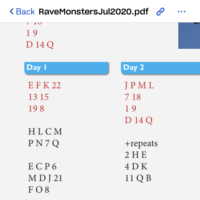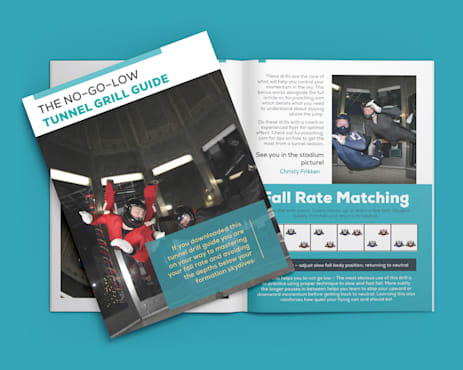Don’t skip this critical type of competition training
Monday, June 21, 2021

- Christy Frikken
- 6/21/21
- 0
- Mental Game
My teams are very aware I sprinkle scored competition-style dives into daily training right from the get-go. These dives (red dives, because they are color-coded) bring focus and simulate a competition as much as possible. But why do I differentiate this from regular jumps?
Before I explain why I use this approach, here are a few learning concepts to consider.
“Red Dives”
Each camp, I give teams a few competition-style dives to execute. These dives comprise 25-33% of the day. The jumps are not drills – they are scored real skydives that are typically part of a draw. These dives are NOT repeated, you only get one shot to be great!
Adding challenge and complexity is a big reason to do this type of training.

Recall Means Learning
Learning happens during retrieval. This means that moment you have to scratch your head to remember your move on the Canadian Tee is where the magic happens. That slight pain you feel while you search your mental archives grows the connections. Repeating stuff immediately, therefore, doesn’t strengthen the relationship as well.
Test test test
If you give a student an exam before presenting the material, the student will score higher on a test after learning it. Why? Because scratching your head and failing to come up with an answer alerts your brain to be on the lookout for the information when it becomes available. So when you don’t know how to do a 22 to 9 transition on a test dive, your brain will be eager to absorb the info when it pops up later in a drill.
Learning needs to be hard
If you aren’t struggling, you aren’t learning anything new. Just like physical exercise, if you aren’t straining, you aren’t building muscle. Even if you are a little overwhelmed by jumping into a draw on day one, it is ok!
The illusion of knowing
Imagine I clone your team. The first group does drills, repeats things, does simplified skydives one step at a time. I engineer the dives for smoothness and flow. The second group goes through my red dive plan, doesn’t repeat much, and dives right in.
After the camp, the easy group will think they learned tons! They will be excited about the camp and feel they progressed a lot. The hard group will be slightly uncomfortable. They will recall the camp as brutal and feel like they can quickly detail how much they have to improve.
Here is the magic bit, though, if we test them at the end of the season, the hard group will be better. This phenomenon occurs in everything from math to baseball. Make it easy, break it into bits, add repetition, and you feel better. Make it hard, space it out, mix it up, and you will BE better.
As a paid coach, I might attract more teams if I do things the easy way. They certainly will feel great about the camp and season until Nationals. But I choose to push my teams hard to get their best. After using this technique for five years, I feel strongly it has had a very positive effect on my team’s season-long outcomes.
Is there a place for feel goods? For sure! I don’t ignore team confidence building either. But being aware of what approach you are taking, when you want to take it, and why is how you can rock your 4-way season.
Where do I come up with all this weirdness? The latest and most significant learning research I can get my hands on. If you want to know more, here are some recommended sources:
My favorite overall book on Learning: Make it Stick
For the ambitious, excellent learning-related (free!) online course: Learning how to Learn
Up for the challenge? You’ll love the value of the “red” dives! Contact me and I’ll be happy to tell you how to tell you more about how to use this technique!



